Trees Birds Mammals Fish Amphibians Reptiles
Wild Algarve
Bookshop
Suillus cavipes (Opat.) A.H. Sm. & Thiers - Hollow Bolete
Phylum: Basidiomycota - Class: Agaricomycetes - Order: Boletales - Family: Suillaceae
Distribution - Taxonomic History- Etymology - Identification - Culinary Notes - Reference Sources
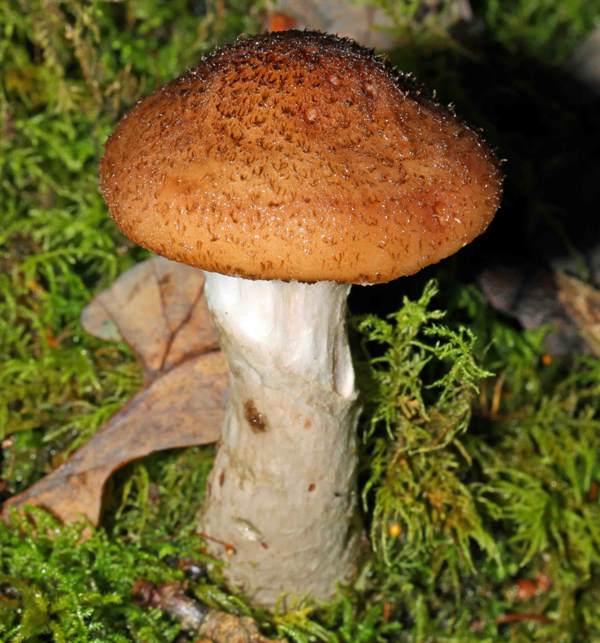
Suillus cavipes, commonly known as the Hollow Bolete,
is a summer and autumn fungus. The very scaly and non-slimy cap surface and the hollow (at least in the lower part) stem distinguish it from other members of the genus Suillus.
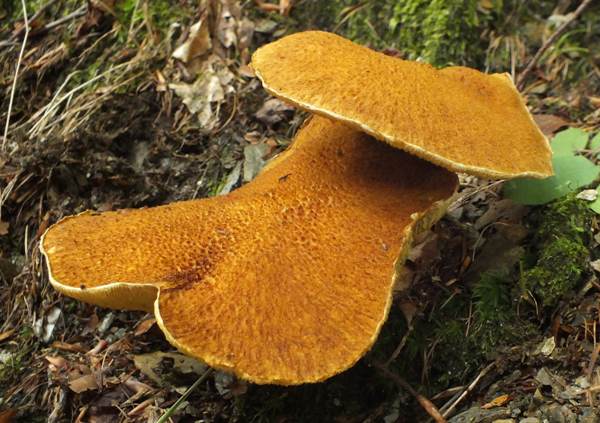
Distribution
Unfortunately, this large, conspicuous and very beautiful bolete is
not often seen in Britain and Ireland, but it is much more plentiful under larch trees in parts of central Europe.
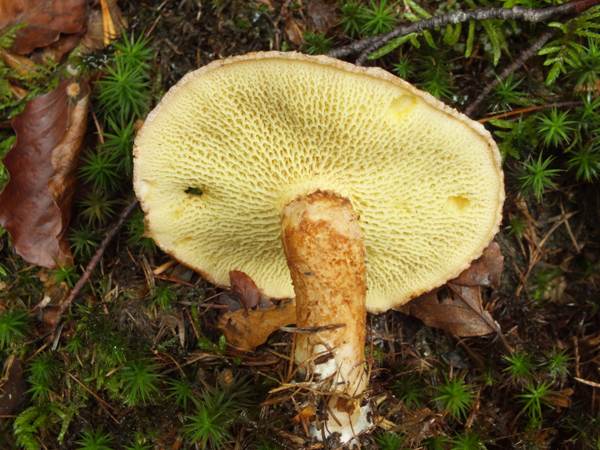
Taxonomic history
This spectacular bolete was described in 1836 by the German mycologist Wilhelm Opatowski (1810 - 1838), who gave it the binomial scientific name Boletus cavipes.
It was not until 1964 that this unusual bolete was transferred to the genus Suillus by American mycologists Alexander Hanchett Smith (1904 - 1986) and Harry Delbert Thiers (1919 - 2000), whereupon this species acquired its currently-accepted (by most but not all authorities) scientific name Suillus cavipes.
There are several synonyms of Suillus cavipes (Opat.) A.H. Sm. & Thiers including Boletus cavipes Opat., Paxillus porosus Berk., Boletinus cavipes (Opat.) Kalchbr., Boletinus cavipes var. aureus Rolland, and Boletinus cavipes f. aureus (Rolland) Singer.
Etymology
The specific epithet cavipes means'with a hollow stem', while the generic name Suillus comes from the Latin noun sus, meaning pig. Suillus therefore means 'of pigs' (swine) and is a reference to the greasy nature of the caps of all fungi in this genus.
Identification Guide
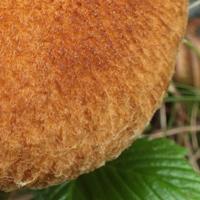 |
Cap
5 to 8cm across when fully expanded, the caps are convex and covered in fibrillose scales, pale to dark rusty brown; not anything like as slimy as most other members of the genus Suillus. |
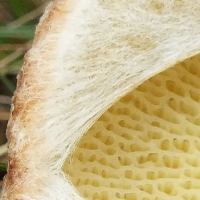
|
Tubes and pores
The short yellow tubes are decurrent to the stem, and they terminate in yellow angular compound pores that do not change colour significantly when bruised. |
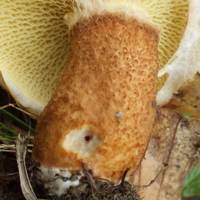
|
Stem
Pale at the apex, then either concolorous with the cap or less often off-white below a fibrillose ring. At least the lower part of the stem and often the whole of the stem contains cavities. (A cavity is just visible through the animal bite mark on the stem base shown here.) |
| |
Spores
Ellipsoidal to sub-fusiform, smooth, 7-10.5 x 3.5-4.5μm.
Spore print
Clay brown. |
Odour/taste |
Not distinctive. |
Habitat & Ecological role |
Mycorrhizal; beneath larch trees. |
Season |
August to October in Britain and Ireland. |
Similar species |
Suillus grevillei has a bright yellow-orange cap and angular
pores; it also occurs under larch. |
Culinary Notes
Although not generally rated highly, the Hollow Bolete is reported to be edible when thoroughly cooked. In Britain this is a rare species and should not, therefore, be gathered for eating.
Reference Sources
Fascinated by Fungi, 2nd Edition, Pat O'Reilly 2016, reprinted by Coch-y-bonddu Books in 2022.
British Boletes, with keys to species, Geoffrey Kibby (self published) 3rd Edition 2012
Roy Watling & Hills, A.E. 2005. Boletes and their allies (revised and enlarged edition), – in: Henderson, D.M., Orton, P.D. & Watling, R. [eds]. British Fungus Flora. Agarics and boleti. Vol. 1. Royal Botanic Garden, Edinburgh.
BMS List of English Names for Fungi
Dictionary of the Fungi; Paul M. Kirk, Paul F. Cannon, David W. Minter and J. A. Stalpers; CABI, 2008
Taxonomic history and synonym information on these pages is drawn from many sources but in particular from the British Mycological Society's GB Checklist of Fungi.
Acknowledgements
This page includes pictures kindly contributed by Rob Petley-Jones.
Top of page...
Fascinated by Fungi. Back by popular demand, Pat O'Reilly's best-selling 450-page hardback book is available now. The latest second edition was republished with a sparkling new cover design in September 2022 by Coch-y-Bonddu Books. Full details and copies are available from the publisher's online bookshop...